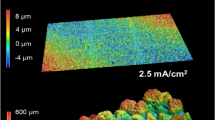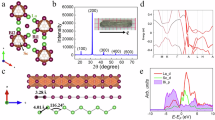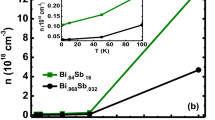Abstract
SINCE publishing the concluding part of my in vestigations on the viscosities of metals (Phil. Mag., April 1927, Supp.) I have come across the following data for bismuth—a metal I could not procure in the form of a wire. In an attempt to study, for a different purpose, the elastic properties of pure bismuth wires prepared from electrolytically deposited metal, J. E. Harris (Phy. Rev., First Series, 35, pp. 95–119) tabulated the values of log. dec. for different amplitudes for a wire of length 106 cm.; diam., 0.25 mm. period, 10.498 sec.; moment of inertia of the solid, 133 gm. cm.2; which on extrapolating for zero amplitude give γ0 = 0.00978. These results give for the coefficient of viscosity of bismuth, at 23°.7 C., 13.71 × 108 poises—a value quite in a line with others obtained by me with thirteen metals and seven alloys.
This is a preview of subscription content, access via your institution
Access options
Subscribe to this journal
Receive 51 print issues and online access
$199.00 per year
only $3.90 per issue
Buy this article
- Purchase on SpringerLink
- Instant access to full article PDF
Prices may be subject to local taxes which are calculated during checkout
Similar content being viewed by others
Author information
Authors and Affiliations
Rights and permissions
About this article
Cite this article
SUBRAHMANIAM, G. Viscosity of Metals: Bismuth. Nature 120, 770 (1927). https://doi.org/10.1038/120770c0
Issue date:
DOI: https://doi.org/10.1038/120770c0



